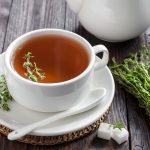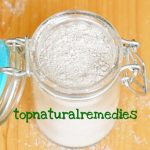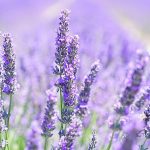Greater Burnet – A Fighter Against Cancer, HIV and Hemorrhages
Greater burnet (Sanguisorba officinalis) is traditionally used for all kinds of hemorrhagia, its most significant medicinal property being that of an astringent hemostatic (hence its generic name being formed from sanguis, blood, and sorbeo, to staunch). And recent scientific researches have not only confirmed its hemostatic properties, but also demonstrated other therapeutic qualities which recommend it for the use against cancer or HIV infection.

Contents
Uses confirmed by scientific studies
- Allergies (A study published in Phytotherapy Research in 2004 demonstrated the antiallergic activity of a natural disaccharide isolated from Sanguisorba officinalis which “exerts its effect via inhibition of mast cell mediator release.” Also, the results of a study published in Immunopharmacology and Immunotoxicology in 2002 suggested that “an aqueous extract of Sanguisorba officinalis may be beneficial in the regulation of immediate-type allergic reaction.”)
- Breast cancer (A study published in Expert Opinion on Therapeutic Targets in 2012 concluded that “Sanguisorba officinalis might be of value as a breast cancer preventive and therapeutic agent by inducing apoptosis and inhibiting angiogenesis.”)
- Prostate cancer (A study published in Molecular Medicine Reports in 2012 demonstrated that “a methanol extract of Sanguisorba officinalis has potential as a drug candidate for the treatment of prostate cancer.”)
- Oral cancer (A study published in Oncology Letters in 2012 concluded that “a hot water extract of Sanguisorba officinalis may serve as a potential drug candidate against oral cancer.”)
- Inflammatory disorders (A study on the inhibitory effect of Sanguisorba officinalis ethanol extract on nitric oxide and prostaglandin E2, published in Journal of Ethnopharmacology in 2011, showed that it had “a potent anti-inflammatory activity.”)
- Asthma (A study published in International Journal of Molecular Medicine in 2010 showed that “an ethanolic extract of Sanguisorba officinalis has therapeutic potential against bronchial asthma associated with allergic diseases.”)
- HIV infection (A study published in Yao Wu Shi Pin Fen Xi (Journal of Food and Drug Analysis) in 2013 demonstrated that extracts of Sanguisorba officinalis inhibit the entry of human immunodeficiency virus type one, including reverse-transcription-inhibitor-resistant viruses and a protease-inhibitor-resistant strain.)
- Atherosclerosis (A study published in Die Pharmazie in 2011 evaluated the anti-hyperlipidemic effects of a chemically modified triterpenoid glycoside (ZYM-201 sodium succinate) isolated from Sanguisorba officinalis in rats in which hyperlipidemia had been induced by dietary administration of cholesterol and cholic acid. The results suggested that “ZYM-201 sodium succinate could play a role in modulating hyperlipidemic conditions, which could be used as a valuable remedy for the treatment of relevant disorders such as atherosclerosis and vascular diseases.”)
- Blood platelets disorders (A study published in Molecules in 2014 demonstrated that “two ellagic acids isolated from roots of Sanguisorba officinalis promote hematopoietic progenitor cell proliferation and megakaryocyte differentiation”, thus proving it “to have potential for clinical development as a therapeutic agent for patients with blood platelet disorders.”)
- Wrinkles (A study published in Bioscience, Biotechnology and Biochemistry in 2008 demonstrated the anti-wrinkle activity of ziyuglycoside I isolated from a Sanguisorba officinalis root extract.)
- Irregular menstrual flow, heavy menstrual flow during menopause, ulcerative colitis, wounds, boils (A study published in Molecules in 2012 showed that seven terpene glycosides from the roots of Sanguisorba officinalis exert hemostatic activities, ziyu-glycoside Ι being demonstrated to exert a “strong hemostatic activity.”)
Other uses
- Bladder problems
- Hot flashes
- Diarrhea
- Varicose veins, phlebitis, hemorrhoids
Preparation and administration
Add 1 teaspoon of finely cut dried herb (especially rhizomes and roots, but aerial parts also) in a cup of hot boiled water and let steep for 10-15 minutes. Drink 2-3 cups a day.
For external use, mix some powdered rhizomes and roots with sesame oil.




Thanks